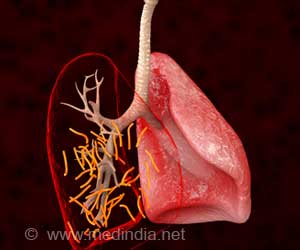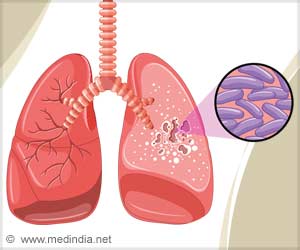A new study conducted by researchers from the University of Cincinnati (UC) and Columbia University Mailman School of Public Health suggests that pollution-related asthma may start in the womb.
A combined research by the University of Cincinnati (UC) and Columbia University Mailman School of Public Health has revealed that pollution-related asthma may actually originate in the womb.
Revealing their findings in the journal PLoS ONE, the researchers said that children born in areas with increased traffic-related pollution might be at greater risk of developing asthma due to genetic changes acquired in the wombThe researchers studied umbilical cord blood from New York City children, and discovered evidence of a possible new biomarker-an epigenetic alteration in the gene ACSL3-associated with prenatal exposure to polycyclic aromatic hydrocarbons (PAHs).
They pointed out that such chemical compounds are created as byproducts of incomplete combustion from carbon-containing fuels, resulting in high levels in heavy-traffic areas.
Past studies have linked exposure to PAHs to diseases like cancer and childhood asthma.
The researchers said that their latest finding provides a potential clue for predicting environmentally related asthma in children, particularly those born to mothers who live in high-traffic areas while pregnant.
The team claim that theirs is the first study to examine the effects of prenatal ambient air pollutant exposure on epigenetic changes-which may disrupt the normal functioning of genes by affecting their expression but do not cause structural changes or mutations in the genes-linked to asthma.
Advertisement
"Our data support the concept that environmental exposures can interact with genes during key developmental periods to trigger disease onset later in life, and that tissues are being reprogrammed to become abnormal later," says Dr. Shuk-mei Ho, senior author of the paper, chair of UC's Department of Environmental Health and the director of the Center for Environmental Genetics.
Advertisement
The researchers used biological specimens from the CCCEH birth cohort of mothers and children living in Northern Manhattan and the South Bronx, and analysed umbilical cord white blood cell samples from 56 children for epigenetic alterations related to prenatal PAH exposure.
They found a significant association between changes in ACSL3 methylation-a gene expressed in the lung-and maternal PAH exposure.
According to them, ACSL3 was also associated with a parental report of asthma symptoms in the children prior to age 5.
With confirmation in further studies, researchers say changes in the ACSL3 gene could serve as a novel biomarker for early diagnosis of pollution-related asthma.
"This study provides a blueprint for the discovery of epigenetic biomarkers relevant to other investigations of exposure-disease relationships in birth cohorts," says Wan-yee Tang, PhD, a UC research scientist and a co-first author on the paper.
"Understanding early predictors of asthma is an important area of investigation because they represent potential clinical targets for intervention," adds Rachel Miller, MD, director of the CCCEH asthma project and study co-author.
Source-ANI
TAN/SK








